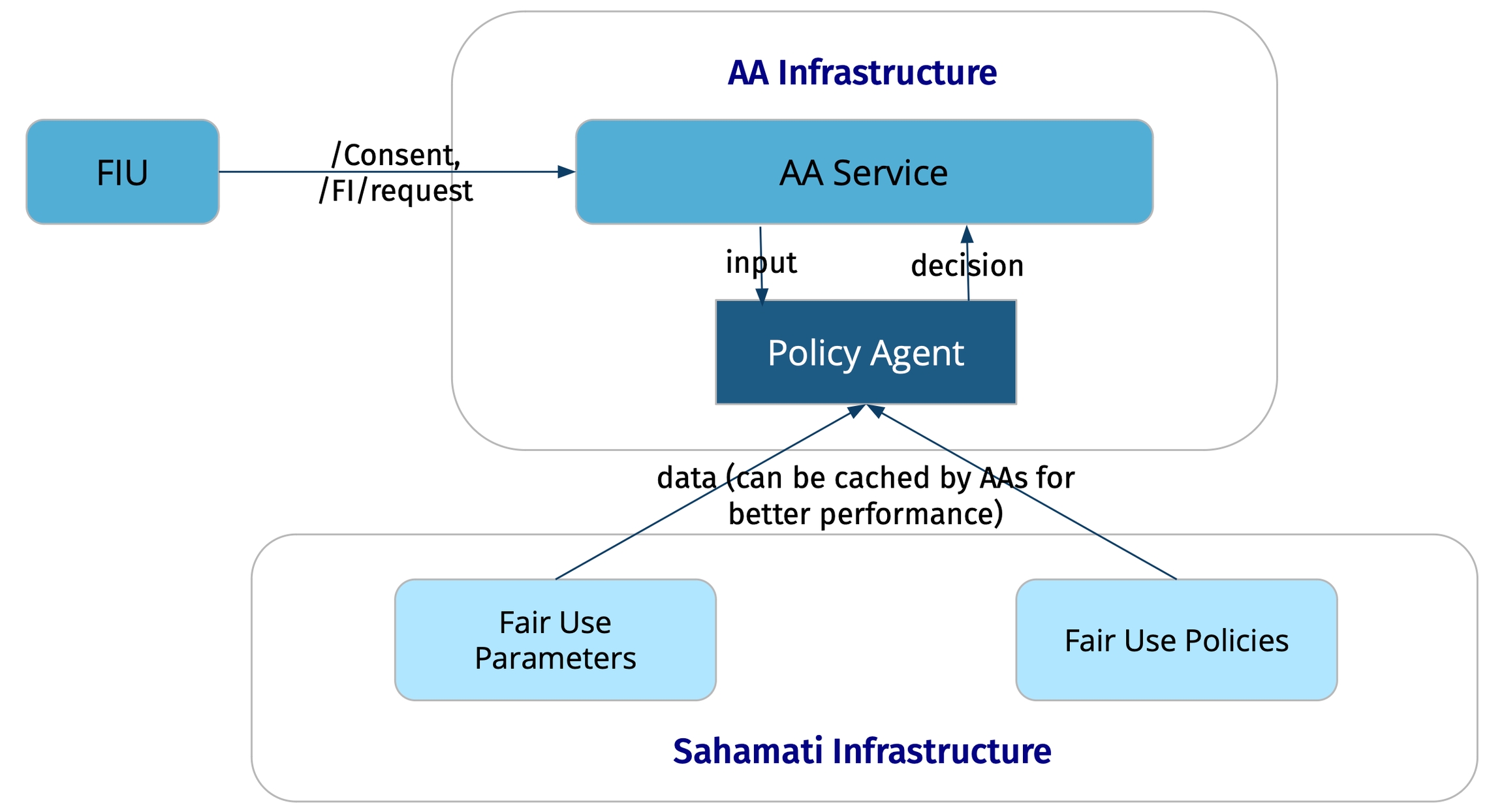Fair Use Compliance
Fair Use Parameters
Fair Use Parameters establish guidelines for data collection practices within the AA ecosystem, ensuring transparency, fairness, and compliance. They define the bounds for attributes of consent artefact that can be employed for a specific use case. They are collaboratively defined by FIUs, AAs, the Fair Use Committee, and the Sahamati Governing Council.
Each use case is mapped to one Purpose Code and the AA ecosystem is collaborating with ReBIT to expand the list of purpose codes to ensure comprehensive coverage of various use cases at a granular level.
Fair Use Parameters Sample
{
"Purpose Code": "103",
"Use Case": "Underwriting Risk: Underwriting a loan application",
"License Types": "Bank, NBFC, HFC",
"Fair Use Parameters": {
"FITypes": [
"DEPOSIT", "TERM_DEPOSIT", "RECURRING_DEPOSIT", "SIP", "CP",
"GOVT_SECURITIES", "EQUITIES", "BONDS", "DEBENTURES", "MUTUAL_FUNDS",
"ETF", "IDR", "CIS", "AIF", "INSURANCE_POLICIES", "NPS", "INVIT",
"REIT", "GSTR1_3B", "LIFE_INSURANCE", "GENERAL_INSURANCE", "OTHER"
],
"Consent Types": ["Profile", "Summary", "Transactions"],
"FetchType": "ONETIME",
"MaximumFrequency": {
"unit": "MONTH",
"value": 1
},
"MaximumFIDataRange": {
"unit": "MONTH",
"value": 14
},
"Maximum Consent Expiry": {
"unit": "MONTH",
"value": 1
},
"Maximum Data Expiry": {
"unit": "MONTH",
"value": 1
},
"Consent Mode": ["Store", "View"]
}
}FIUs & AAs are expected to align their usage of consents within the bounds of these parameters, ensuring consistency and adherence to established parameters.
Role of AA Ecosystem Members
ReBIT
Publish expanded list of purpose codes
Sahamati
Fair Use Parameters APIs
Fair Use Policies
Provide Common Infrastructure
Fair Use Reporting to relevant parties
FIUs
Adopt new purpose code definitions and fair use parameters
AAs
Fair Use Policy enforcement for consent & FI requests
Report Fair Use data
FIPs
No Changes required
Fair Use Policy Framework
A policy-based automated framework that ensures compliance to fair use of consumer's consent and data in the AA ecosystem. AAs must enforce the Fair Use Policy for consent on all "Consent Request" and “FI Request” APIs.

The fair use policy framework consists of three main Policy components and a Policy Agent:
Policy Components
Input: The payload of the consent/FI request API
Data: Fair Use parameters and Fair use policies.
Policy: A set of rules applied to the consent/FI request API to ensure the fair use of consent and data. These rules primarily define the logic to evaluate the applicability of a given purpose code for the FIU by validating the consent parameters sent in the input against the parameters in the Fair Use parameters data. Policy rules should be defined as per a standard specification agreed and adopted by the Sahamati ecosystem.
Policy Agent
Policy Agent is responsible for evaluating the policy rules, as defined in the policy, against the API input using the data component of the policy. Output of the policy agent will be one of the output values defined in the policy rules. For example, the output of evaluating the fair use policy could be:
accept: accept the incoming consent request and process it further (i.e. present to the consumer normally)
reject: reject the incoming consent request and return an appropriate error to the FIU (e.g.: if the consent parameters are out of range by a large value)
report: accept the request and report non-compliance
Was this helpful?